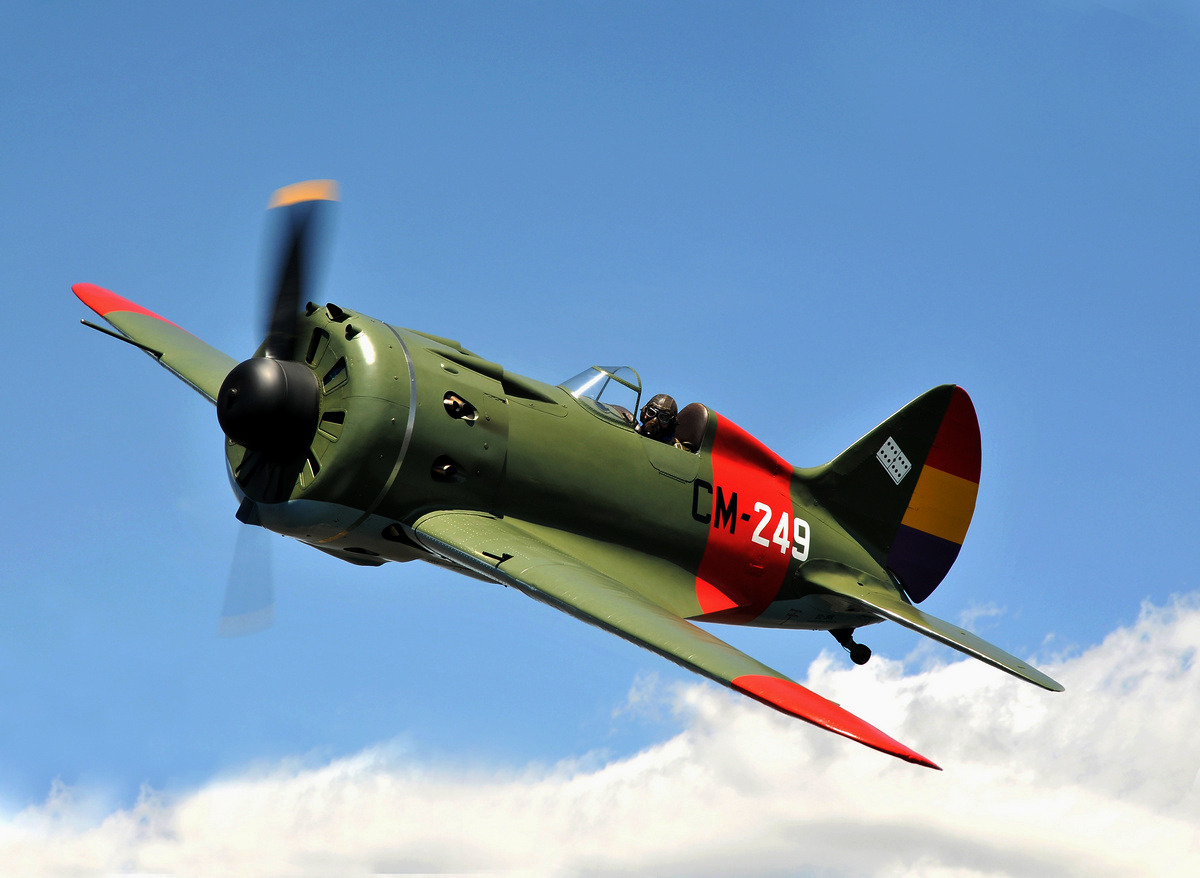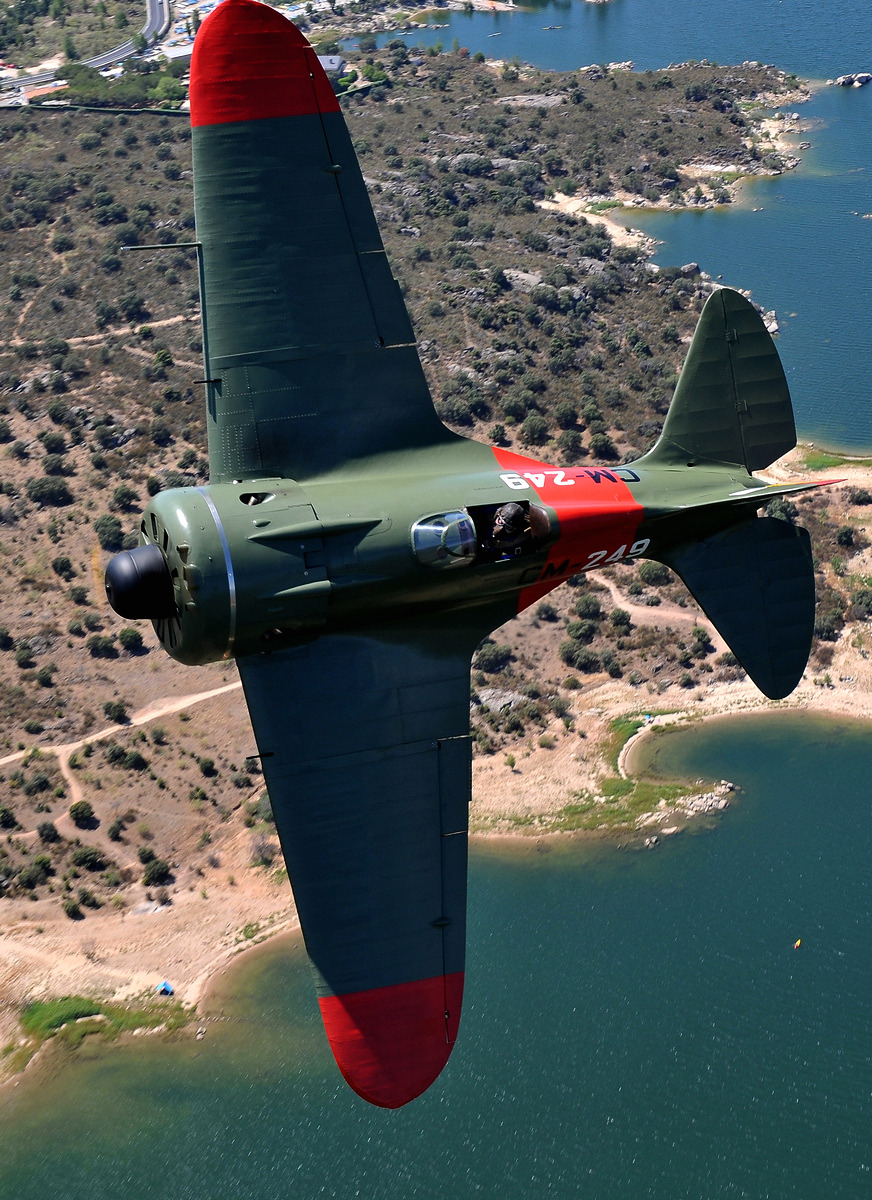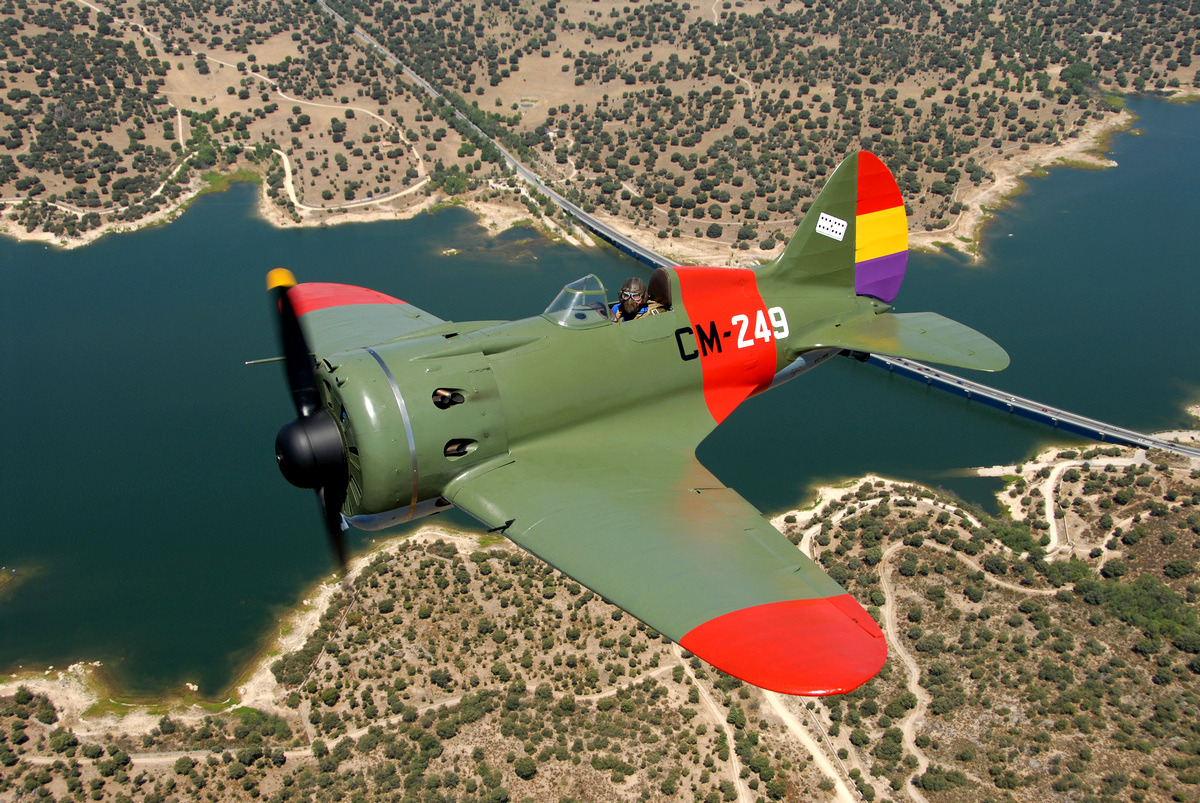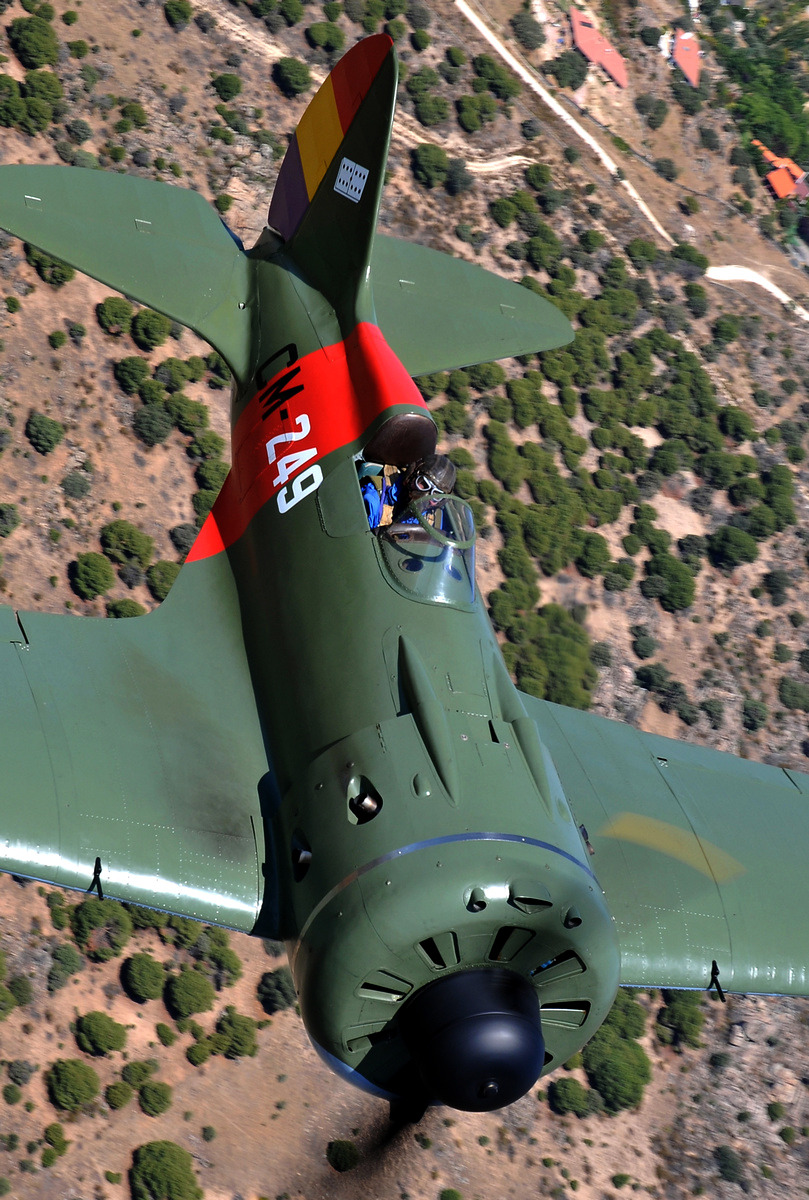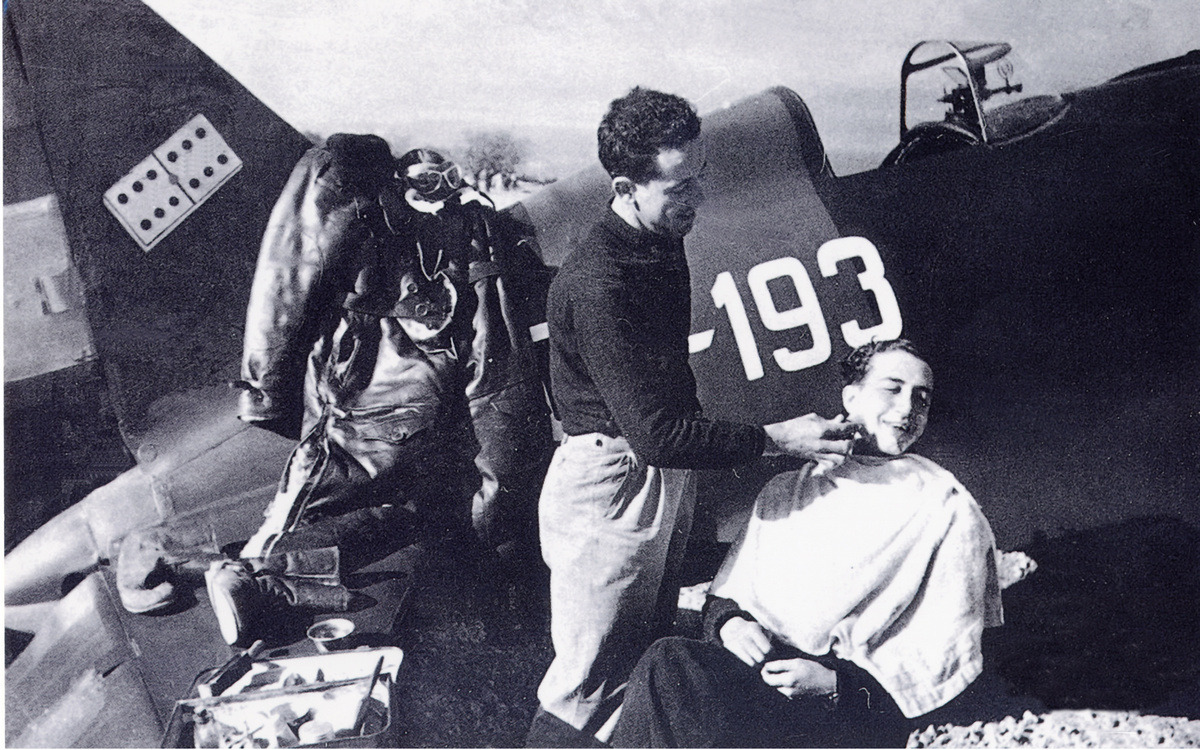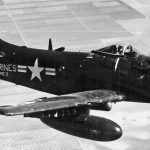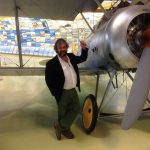Based upon an article by Luigino Caliaro:
The Foundacion Infante de Orleans or FIO, is the Spanish historic aviation flying museum, a group of aviation enthusiasts and pilots formed the non-profit organization in Cuatro Vientos Airport, near Madrid 1989 for the sole purpose of preserving and sharing Spanish aviation history. They named it in honor of Don Alfonso de Orleans y Borbon (1886-1975) a famous Spanish pilot and aviation pioneer. He was the first Spanish military pilot, graduating in 1910, and flew well into the final years of his life amassing more than 6000 flying hours. FIO set out to retrieve and restore aircraft with a significant place in Spain’s aeronautical heritage. The collection now has around 38 airworthy planes, spanning more than seventy years of Spanish aviation culture. They maintain them in their own workshop, and exhibits their collection to the public once a month with an air display from their home base. One of their most important artifacts is an airworthy Polikarpov I-16 Rata, and that is the focus of this article.
The Rata in Spain: In November 1936 during the Spanish Civil War, General Franco’s Nationalist armies were about to take Madrid. Their bomber crews were surprised at the sight of a number of small monoplanes attacking them at what seemed an unbelievably high speed. The speedy and diminutive Polikarpov I-16s, painted in dark a color, gave the impression that “looked like as if they were coming out of the drains.” This was the reason that they were dubbed as Rata, or Rat in Spanish. Their Republican pilots, on the other hand, nicknamed them Mosca, Spanish for House Fly, because of a free interpretation of the Russian name for the city of Moscow that was painted on the aircraft’s shipping crates. The two squadrons of Polikarpov that joined the Battle for Madrid were soon seen to perform far better than the Nationalist side’s Fiat CR.32 “Chirri”. The arrival of the amazing Polikarpov, the first monoplane fighter to enter service anywhere in the world, undoubtedly contributed to the Madrid Republican forces obtaining a major defensive victory.
When the I-16 Type 5 first entered service in the Soviet Union during 1935, it became the world’s first monoplane with retractable landing gear. The crudely-built aircraft had a wooden structure with birch covering. It was a difficult aeroplane for average pilots, being considered a “devil” for its delicate landing qualities, and because of its natural tendency to spin with the slightest of errors. It was an unstable aircraft, making it a tricky firing platform, but was very agile which gave it extraordinary advantages in a dog fight. The Type 10 upgrade from 1937 had excellent armament with four ShKas 7.62mm machine guns making it a fearsome opponent when in the right hands.
The first deliveries to Spain involved thirty one I-16 Type 5 fighters, followed by further planes the next year so that by mid-1937, ninety Moscas were in service withe Republican forces. The delivery of I-16 Type 10s solved one of the major shortcoming of the Type 5 that had just two machine guns. The new type was armed with four guns and dubbed the Super Mosca by Republican pilots. From September 1938, twelve I-16s from the last two consignments were retro-fitted in Spain with American Wright Cyclone engines that had been able to evade the armament blockade then in force. Most of the aircraft converted came from 4 Escuadrilla ‘Mosca’, although there were some exceptions. The Spanish mechanics’ modifications also included many other improvements on these ‘Mega Moscas’, mostly aimed at confronting the superior Bf.109 at higher altitudes. Oxygen equipment, four ShKas machine guns, a reflex sight, some armoring for the pilot, twin exhaust stacks and a chin air intake for the Wright Cyclone engine were among these improvements.
After its combat debut over Madrid, the Moscas were operational for the next two and half years, achieving their most notable successes in the battle of Guadalajara, the Northern Campaign. They fought in very difficult conditions in Brunete, in Teruel, and finally in the Battle of Ebro, the beginning of the end, which followed six months later with the collapse of Catalonia. Mosca pilots learned from experience that the chances of beating the Fiat CR.32 “Chirri” biplanes increased if they attacked with a fast pass and then broke off combat, denying the “Chirri” its advantage of superior maneuverability in a classical dog fight. The Republican side is believed to have received 278 I-16s from the Soviets during the Spanish Civil War, of which they lost 112 in combat and 75 in accidents. Only fifty three examples remained by the end of the war in April, 1939. Several of them served until 1953 as advanced fighter pilot trainers in the post-war Ejército del Aire. Sadly, none of them survived the scrapyard.
THE F.I.O. Mosca
In the early 1990s, the Alpine Fighter Collection in New Zealand contracted the Aeronautical Research Bureau of Novosibirsk to remanufacture six examples of the I-16 from wrecks discovered around Russia. As soon as the FIO heard this, they launched a campaign to bring one to Spain. A lot of people supported the project, however it was only with the support of the Getafe City Council that they achieved their goal. Getafe signed an agreement with FIO to build a new museum, and to finance part of the Rata acquisition. After negotiation, the FIO acquired their Rata for €262,000. It arrived in Spain in early 2005. FIO’s Mosca is based upon the remains of an example found in 1992 near Lake Kokkojarvi in Karelia, a region of northern Russia bordering Finland. Manufactured in 1937, it belonged to 122 Squadron of the Soviet Northern Fleet.
FIO’s I-16 made its maiden post-restoration flight in 1997, and its official public debut in Spain came on May 4th, 2008. The plane is marked as CM-249, a Super Mosca flown by Captain Jose Maria Bravo, commanding officer for 3 Escuadrilla. Although this was Captain Bravo’s plane, as the white squadron leader’s code numbers indicate, Sgt. J. L. Tarazonait also flew it on occasion. The 3ª Escuadrilla “Moscas” formed in 1937, commanded by a Russian, Boris Smirnov. The Esquadrilla fought during the Battle of Guadalajara and later in the Battle of Segovia. The squadron had two further Russian commanders, Ukhov and Yevseviev during the Battle of Brunete. After reunited with 2ª Escuadrilla, the planes fought during the Battles of Belchite and Teruel. After this last battle, the 3rd Esquadrilla received a Spanish commander named José María Bravo in Salou during march 1938. He led them through various aerial battles until the unit was disbanded in February 1939 after the Battle of Ebro.
Carlos Valle, FIO President and presently the only Spanish pilot authorized to fly the Rata, is very satisfied with the plane. Translated from the original Spanish, Valle said:
“For a very experienced pilot, to fly a historic plane is always a challenge. However this could be a common experience for the specialized pilot used to flying this historic and rare airplane…especially if these planes are WWII-era high performance fighters. This challenge hardly pushes the limits and the experience of these pilots. Considering also the fact that these planes normally are very rare or even the sole example still flying in the world, it is easy to comprehend the great responsibility assigned to us, historic planes pilots, that we have to show them to the public but also to fly them safely.
F.I.O.’s I-16 Rata is one of these planes with its unmistakable lines, that give the plane a strong personality and its stocky fuselage gave a particular sensation, and it could be considered a example of the top of the Russian mid-thirties technology. I was lucky to get very precious suggestion from my Russian friend Jurgis Kairis, a highly skilled test and aerobatic pilot, which I met and flew during many aerobatic championships. Considering the flight characteristics, the Rata flies well, without major problems. Its ability to fly more than 400 kph without a canopy gave me some extremely strong sensations and I had to wear a well sound-proofed helmet as the engine noise is high.
Another peculiar characteristic is the main gear retraction system. In fact this maneuver is very complicated, as it requires [the pilot] to rotate the retraction wheel with the right hand and to keep the left hand steadily on the control stick, without having any control of the engine power setting in these moments.
However well the Rata flies in the air, landing is a really tricky affair, as the nose obstructs forward vision, coupled with the relatively high approach speed. You have to continuously look outside the plane, and normally before the touchdown I have to slightly yaw the plane in order to see the touchdown point. Considering also that Cuatro Vientos’ main runway is not wide, I have to pay a lot of attention on the touch down and subsequent landing run. If there is no crosswind, it is relatively easy to maintain direction on landing, but with crosswind I have to be careful with the brakes, as their effectiveness is not really the best. Taxiing is another difficult task, as it requires the pilot to follow a zig-zag run to be able to see forward.
In spite of these characteristics, I have to admit that after flying many different historic aircraft types, flying with the Rata is something special, partly for the performance but also for its important history in Spain, allowing me to be extremely proud to be both pilot and president of FIO.”
JOSE MARIA BRAVO:
Jose Maria Bravo is a true living legend of Spanish aviation. Born in Madrid on April 8th, 1917, Josè Maria Bravo was an engineering student in Madrid when the Spanish Civil War began. He enlisted as a volunteer pilot with the Republican side in November, 1936 and trained as a fighter pilot in 1937 at the Kirovada flying school in Russia. He came back to Spain in June 1937 and was assigned initially to 1ª Escuadrilla de Chatos but soon moved to 1ª Escuadrilla “Moscas”, based at Los Llanos, Valencia, commanded by the Russian ace Ivan “Pedro” Devotchenko, entering action in August. In December 1937 Bravo was promoted to deputy commander of the Escuadrilla and in April of the same year he became Commander of the 3ª Escuadrilla de la Aviazion Republicana. At the end of August he became chief of Grupo 21, and in February 1938 escaped from Spain to Russia and enlisted with the Russian Air Force. In 1943 was selected for a very special mission, as he escorted the plane that carried Josif Stalin to the Teheran conference with Churchill and Roosevelt. Jose Maria Bravo flew in its career over 2300 flying hours as pilot fighter and shot down 23 planes by own and with other comrades. After the end of the II WW, Bravo selected to stay in Russia, teaching Spanish Language at the University. He coming back in Spain in 1960, and still living is a “special guest” during the FIO air show. Recently FIO conducted an interview with Bravo where he revealed an interesting story about his first combat flight:
“My first fight was a bit of joke. It was historic. It was during the Belchite offensive (ed-in the Spanish Civil War). The Russian general Tuji, the top Russian pilot in Spain, got us all together, and said: “Comrades, you have come through your training course in the Soviet Union with flying colors, but that was the theoretical part. You haven’t finished yet! Now comes the practical part. Your training continues here in the war. That’s why for your first few flights, you won’t be fighting. You are going to see experienced Russian Squadron in combat, but you will just watch them.” I’ve always been very cheeky and I asked him through an interpreter “Comrade Josè ( as we called him in Spain) had the enemy agreed to that then? He called me a Trotskyite that was the worst thing anyone could call you then…I don’t remember what’s happened next , but I think I hit the nail on the head. So one day the whole squadron took of together. I was flying ahead a classmate of mine, Gandia, who got killed flying with me in Tarragona, chasing a Dornier we shot down. No it was a Cant…They made him a Squadron Leader. He flew just as badly I did but he spoke better russian then me. Suddenly the leader saw some plane below us and he dived to attack them. Me and Gandia got stuck among a bunch of Fiats, and didn’t see what the leader had done. So there we were, surrounded by all these Fiat. My collegues said I was a hero, but I wasn’t. I was petrified. I squeezed the the machine gun trigger until I run out of ammunition. We’d been given orders not to leave the battle area while there were still enemy aircraft in the air. Anyway I looked around and I couldn’t see anybody. I was alone. And suddenly the anti-aircraft guns started firing at me. I though myself “ this is not good “ so I turned around. Just as I turned around the engine stopped. I ‘d run out fuel! There was a parachute, and a good thing I thought “how can I jump out now” with the plane intact. That’s disgraceful ! And so on. So I said myself “ right whatever happens I’m going to try to land somewhere. I did manage to find and airfield and I landed just fine. And it turned to be out my airfield. I had no idea but I landed there! Everybody was congratulation with me they all thought I’d been shot down because I got back so much later than everybody else. The plane was covered with bullet holes, on the wings, and on the propeller!”
A special thanks to Luigino Caliaro for helping with the drafting of the article and the photos. F0r more information about Luigino’s work visit www.aerophoto.it







